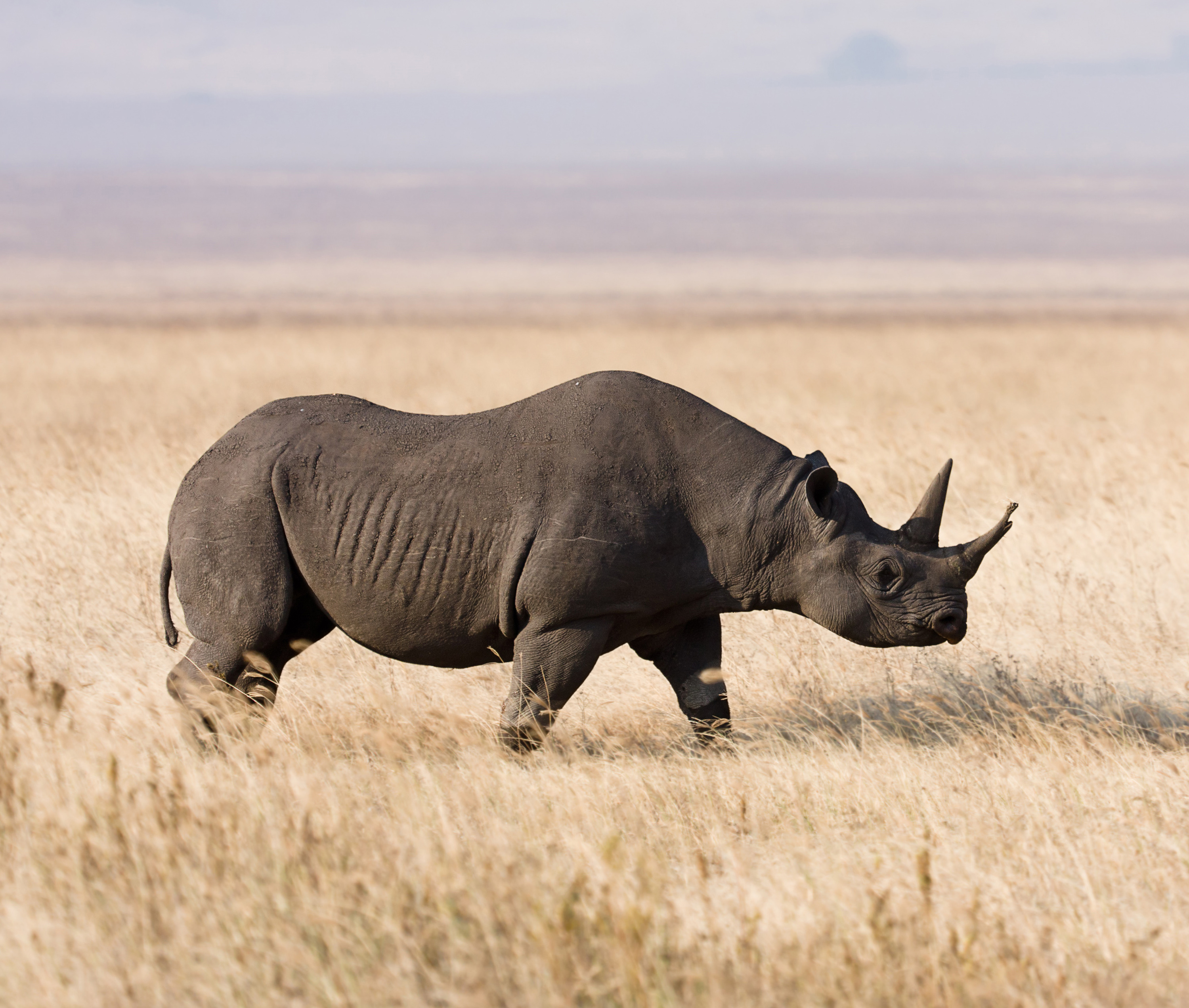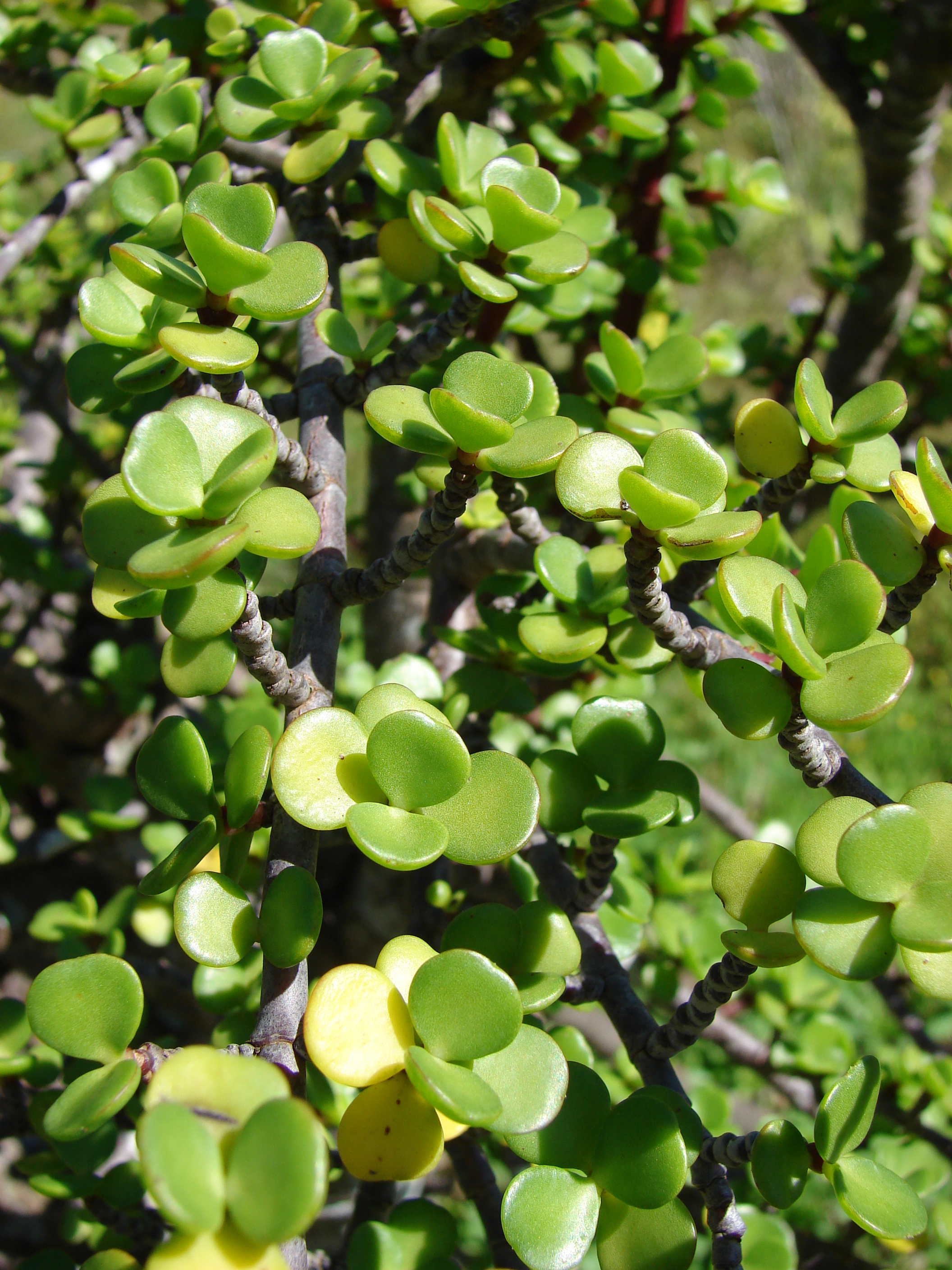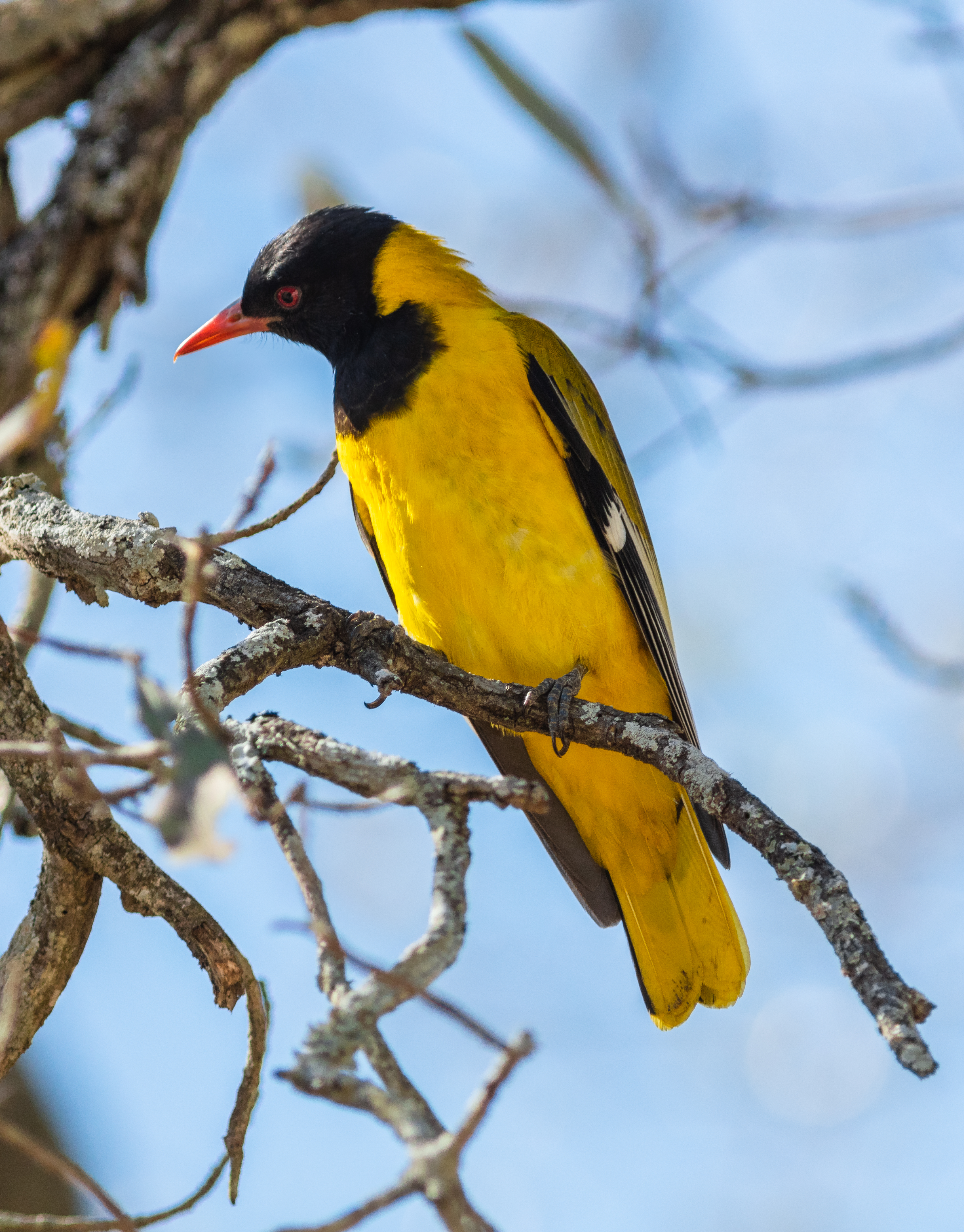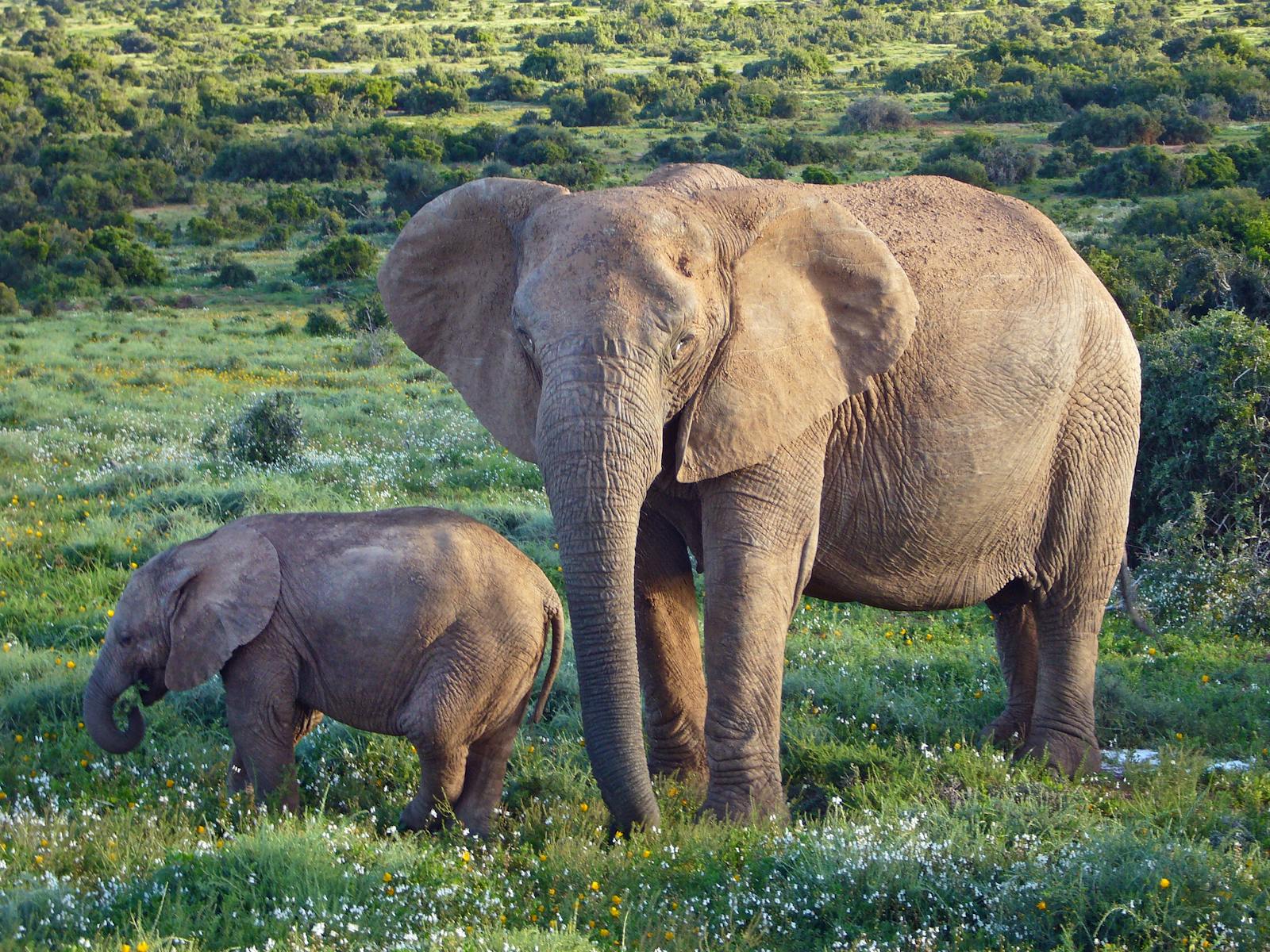Albany Thickets
The ecoregion’s land area is provided in units of 1,000 hectares. The protection goal is the Global Safety Net (GSN1) area for the given ecoregion. The protection level indicates the percentage of the GSN goal that is currently protected on a scale of 0-10.
Bioregion: South African Cape Shrublands & Mountain Forests (AT2)
Realm: Afrotropics
Ecoregion Size (1000 ha):
3,682
Ecoregion ID:
88
Conservation Target:
20%
Protection Level:
4
States: South Africa
Indigenous megaherbivores, elephants, and black rhinos browse on the impenetrable 3 m tall Albany thicket, altering the structure and composition as they go. The elephants’ chaotic foraging technique promotes coppicing while the herbivores’ hind-gut fermentation encourages seed dispersal by rapidly passing seeds rather than digesting them. By acting as patch disturbance agents, elephants maintain the ecological balance and increase woody plant densities. However, the replacement of indigenous megaherbivores by domestic herbivores has resulted in severe degradation of the landscape.

The flagship species of the Albany Thickets ecoregion is the south-western black rhino. Image credit: Creative Commons
The Albany thicket is a dense, spiny shrubland with a canopy up to 2.5 m in height and usually abundant succulents. It is located in South Africa along the Fish, Sundays, and Gamtoos River valleys in the eastern Cape. Towards the coast, soils may include consolidated dune sands, with the densest thickets occurring on the deepest sandy loams. Soil characteristics may be one of the factors responsible for the confined distribution of the Albany thicket.
The Fish, Sundays, and Gamtoos River valleys have high diurnal and annual temperature ranges and low, sporadic rainfall. The three summer months (December to February) are the driest. Annual temperatures in the inland valleys are extreme, ranging from 0ºC to more than 40ºC. The coastal areas of the valleys have a more moderate climate with a temperature range from 10oC to 35ºC and a slightly higher annual rainfall of 450 to 550 mm per year. Valley mists are common towards the coast, providing additional moisture.

Porkbush succulent. Image credit: Forest and Kim Starr, Creative Commons
Botanists have long recognized the Eastern Cape as a complex transition zone where four phytochoria (geographic areas with a relatively uniform composition of plant species) converge. The Albany area is a center of endemism for succulent Euphorbia species. Endemic succulents include sheep fig, Lampranthus productus, Euphorbia fimbriata, Euphorbia gorgonis, Gasteria armstrongii, Aloe africana, and Haworthia fasciata. The Albany area is also a center of endemism for cycads and geophytes including Cyrtanthus, Albuca, and Ornithogallum. While this ecoregion is an important center of floral endemism, rates of faunal endemism are low.
Endemic reptiles include Tasman’s girdled lizard, Essex’s dwarf leaf-toed gecko, and Albany adder. Large mammal species include elephant, black rhinoceros, leopard, bushbuck, grey rhebok, mountain reedbuck, eland, greater kudu, hartebeest, cape grysbok, and common duiker. In Addo Elephant National Park, in 2015, there were an estimated 120 south-western black rhino, making it the largest contribution to this species population. Bird species include the Knysna woodpecker, Cape bulbul, and martial eagle.
-CC-2012.JPG)
Hartebeest. Image credit: Creative Commons
Most of the ecoregion is underprotected, although the xeric thickets of the inland river valleys are found within the Addo Elephant National Park. Other protected areas include Andries Vosloo Kudu Nature Reserve, Mountain Zebra National Park, Somerset East Bosberg Nature Reserve, Waters Meeting Nature Reserve, and Lennox Sebe Game Reserve.
Much of the thicket has been converted to other land uses such as pastoralism, crop production, and urban expansion. Overgrazing, primarily by domestic goats, has severely degraded vegetation, and lead to soil erosion and loss of biodiversity. These effects are most noticeable in the more arid areas (xeric thickets and Spekboomveld). Other threats include bush-clearance for development, resource exploitation, and invasive species. Land has been cleared along rivers for lucerne and other crops grown under irrigation, as well as for orange orchards in the Addo region. Mesic thicket is under the greatest threat. Many of the endemic Encephalartos and Euphorbia species and species of the Aizoaceae family are also exploited by plant collectors and for the illegal trade of plants.

Black headed oriole. Image credit: Diego Delso, Creative Commons
The priority conservation actions for the next decade will be to: 1) promote community participation in natural habitat restoration initiatives to ensure socioeconomic and cultural needs of the communities are met; 2) eradicate all invasive alien species from natural areas; and 3) identify suitable corridors for connecting natural and protected areas to improve the resilience of the protected area.
Citations
1. Burgess, N., Hales, J.A., Underwood, E., Dinerstein, E., Olson, D., Itoua, I., Schipper, J., Ricketts, T. and Newman, K. 2004. Terrestrial ecoregions of Africa and Madagascar: a conservation assessment. Island Press.
2. Ferreira, S.M., Bissett, C., Cowell, C.R., Gaylard, A., Greaver, C., Hayes, J., Hofmeyr, M., Moolman-van der Vyver, L. and Zimmermann, D. 2017. The status of rhinoceroses in South African National Parks. Koedoe. 59(1), pp.11-pages.
3. Parker, D.M. 2017. The composition and complexity of the woody and succulent components of Albany thicket with and without elephants. South African Journal of Botany. 112, pp.19-28.
4. Kota, Z. and Shackleton, S.E. 2015. Harnessing local ecological knowledge to identify priority plant species for restoration of the Albany Thicket, South Africa. Forests, Trees and Livelihoods. 24(1), pp.43-58.




